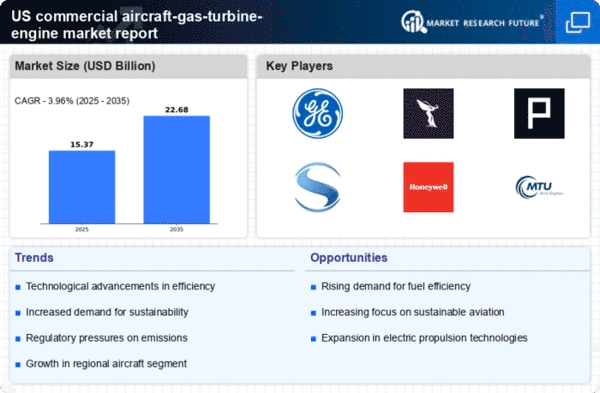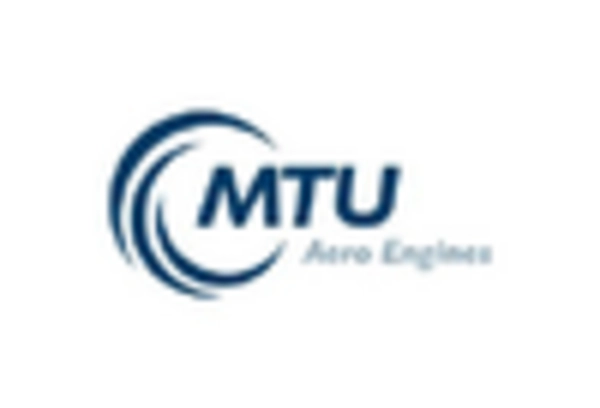Increasing Air Travel Demand
The commercial aircraft-gas-turbine-engine market is significantly influenced by the rising demand for air travel. With an increasing global population and economic growth, the number of air passengers is expected to reach 8.2 billion by 2037, according to the Federal Aviation Administration (FAA). This surge in demand necessitates the production of more aircraft, thereby driving the need for advanced gas turbine engines. Airlines are expanding their fleets to accommodate this growth, which in turn stimulates the commercial aircraft-gas-turbine-engine market. The need for more efficient engines that can operate on lower fuel costs is becoming paramount, suggesting a robust growth trajectory for the market.
Emergence of Alternative Fuels
The emergence of alternative fuels is reshaping the commercial aircraft-gas-turbine-engine market. As the aviation industry seeks to reduce its carbon footprint, biofuels and synthetic fuels are gaining traction. These alternative fuels can potentially lower emissions and provide a more sustainable option for airlines. The FAA is actively promoting research into sustainable aviation fuels (SAFs), which could lead to a significant shift in fuel consumption patterns. The integration of these fuels into existing gas turbine engines may require modifications, but it also presents an opportunity for innovation within the commercial aircraft-gas-turbine-engine market. This shift towards alternative fuels is likely to influence future engine designs and operational strategies.
Investment in Infrastructure Development
Investment in infrastructure development is a critical driver for the commercial aircraft-gas-turbine-engine market. The expansion of airports and modernization of air traffic control systems are essential to accommodate the growing number of flights. The FAA has allocated substantial funding for infrastructure improvements, which indirectly supports the demand for new aircraft and, consequently, gas turbine engines. As airports enhance their capabilities, airlines are more inclined to invest in new fleets equipped with advanced engines. This trend indicates a positive outlook for the commercial aircraft-gas-turbine-engine market, as infrastructure improvements are likely to stimulate further growth.
Technological Advancements in Engine Design
The commercial aircraft-gas-turbine-engine market is experiencing a surge in technological advancements, particularly in engine design. Innovations such as additive manufacturing and advanced materials are enhancing engine efficiency and performance. For instance, the introduction of lightweight composite materials is reducing overall engine weight, which can lead to lower fuel consumption. According to industry reports, the market for advanced turbine engines is projected to grow at a CAGR of 5.2% through 2030. These advancements not only improve fuel efficiency but also reduce emissions, aligning with regulatory standards. As manufacturers invest in research and development, the commercial aircraft-gas-turbine-engine market is likely to see a shift towards more efficient and environmentally friendly engines.
Regulatory Compliance and Emission Standards
The commercial aircraft-gas-turbine-engine market is significantly influenced by stringent regulatory compliance and emission standards. Governments and international bodies are implementing more rigorous regulations to reduce greenhouse gas emissions from aviation. The FAA has set ambitious targets for reducing aviation emissions, which compels manufacturers to innovate and develop engines that meet these standards. The market is witnessing a shift towards engines that not only comply with current regulations but also anticipate future requirements. This proactive approach is likely to drive investment in cleaner technologies, thereby shaping the future landscape of the commercial aircraft-gas-turbine-engine market.

















Leave a Comment